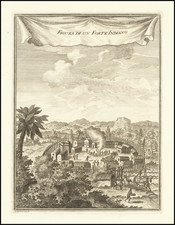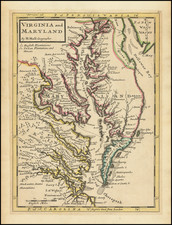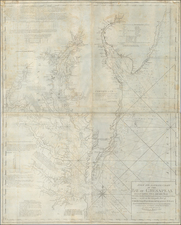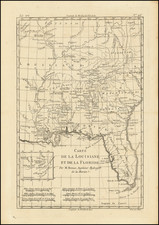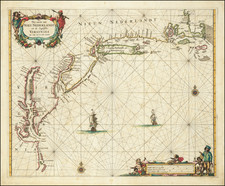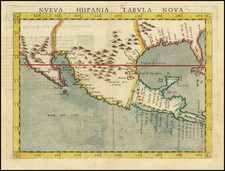Of the greatest rarity, a magnificent example of the first state map of North Carolina, an iconic masterpiece of early American cartography, based on two decades of advanced systematic surveys
This exceptionally fine and highly important map is remarkably rare, not having appeared on the market in the last 40 years. In the years immediately following American independence, there became a great need for new maps of the various states based on new systematic surveys. This was very much true for North Carolina, as the complexion of the state, especially with reference to the rapid development of its mountainous western frontier, had changed greatly since the publication of Henry Mouzon's magnificent work, An Accurate Map of North and South Carolina (1775). Surveyor Jonathan Price responded to this imperative, embarking upon an advanced surveying project of the state in 1789, largely at this own expense. In December, 1792, he petitioned the North Carolina House of Assembly for financial assistance, however, this decidedly parsimonious body only managed to furnish him with a very modest loan. Nevertheless, Price was able to engage a draughtsman, William Christmas, and importantly by 1795 had formed a partnership with John Strother, a fellow surveyor. At about the same time they began soliciting individual subscriptions, however, the monumental nature of the project required a greater infusion of capital. Fortunately two of the state's most prominent political figures were imbued with a great sense of vision; and David Stone, a future U.S. Senator and governor, and Peter Brown, an esteemed jurist, agreed to finance the project from their own private funds.
Meanwhile, Price and Strother continued the Herculean task of surveying the entire state using the most sophisticated equipment and methods, a mean feat given the swampy nature of the coastal areas and the extreme topography of its western counties. When their manuscript was finally completed they sent it off to the Philadelphia printing shop run by the Harrison family, where it was skillfully engraved. According to Walter Ristow, a first state of the map was produced that did not bear any publication date, and this was followed by a second and final state, represented by the present map, that bears the publication date "1808". Both states are incredibly rare, and it seems that neither state was produced in any great quantity, likely due to the fact that very few potential subscribers could afford such a lavish production. The finished map is a masterpiece of early American cartography, an immensely detailed depiction of North Carolina captured during an especially fascinating period in its development. Each of the counties is outlined in beautiful original colour, and the landscape is enlivened by the appearance of towns, foundries, mills, courthouses, canals, roads and private estates along with the names of their individual owners.
Importantly, it is also one of the most articulate and dramatic expressions of the western surge of settlement into the valleys of the Blue Ridge Mountains. The map evinces a curious aberration, likely due to an oversight at the Harrison shop, that sees that the scale of latitude on the western side of the map is off by one degree. This initially led to a great deal of confusion, and this detail was not corrected until H.S. Tanner issued his derivative of the map as part of his American Atlas of 1823.
It is important to consider the Price-Strother map within the context of the greater cartographic and social trends which transpired in America during its era. The present map is one of the finest expressions of the ethic of great American empiricist cartography, and followed in the wake of Osgood Carleton's state map of Massachusetts and Simeon De Witt's map of New York (both published in 1801); and the Madison-Prentis-Davis map of Virginia (1807). It preceded John Melish's highly influential Map of the United States (1816), and appeared far in advance of the Sturges-Early map of Georgia (1818) and James Wilson's map of South Carolina (1822). Within the specific context of North Carolina, the publication of the Price-Strother map both anticipated and influenced a period of great technical and political progress in the state, which buoyed by a period of great economic prosperity in the agricultural sector, came to fruition in the second decade of the century. This ethic led to the formation of the Board of Internal Improvements in 1818, whose mandate was to support advances in science, trade, transportation, education, and indeed the mapping of the state. The board's chair, Archibald D. Murphy, saw the Price-Strother map as one of the greatest evocations of this new spirit, noting "The Map of North-Carolina by Messrs. Price and Strothers, has a accuracy not to have been expected at the time it was completed." Indeed, it was to be the map of record of the state for a generation until Robert H. B. Brazier and John MacRae, building upon its predecessor, published A New Map of the State of North-Carolina in 1833.









